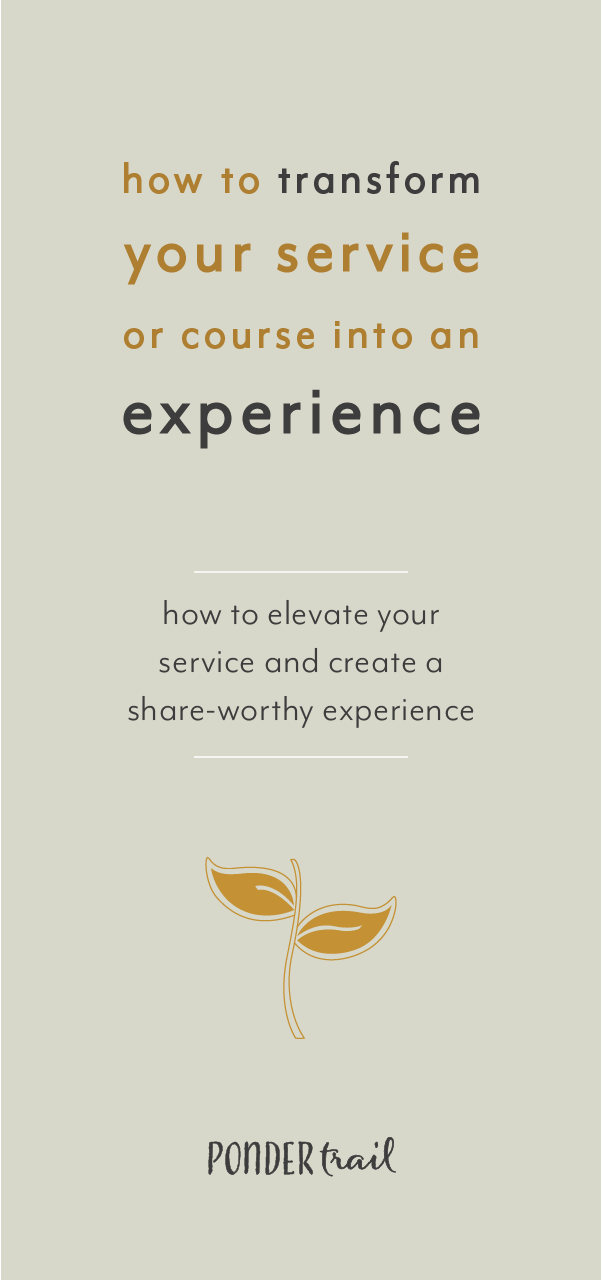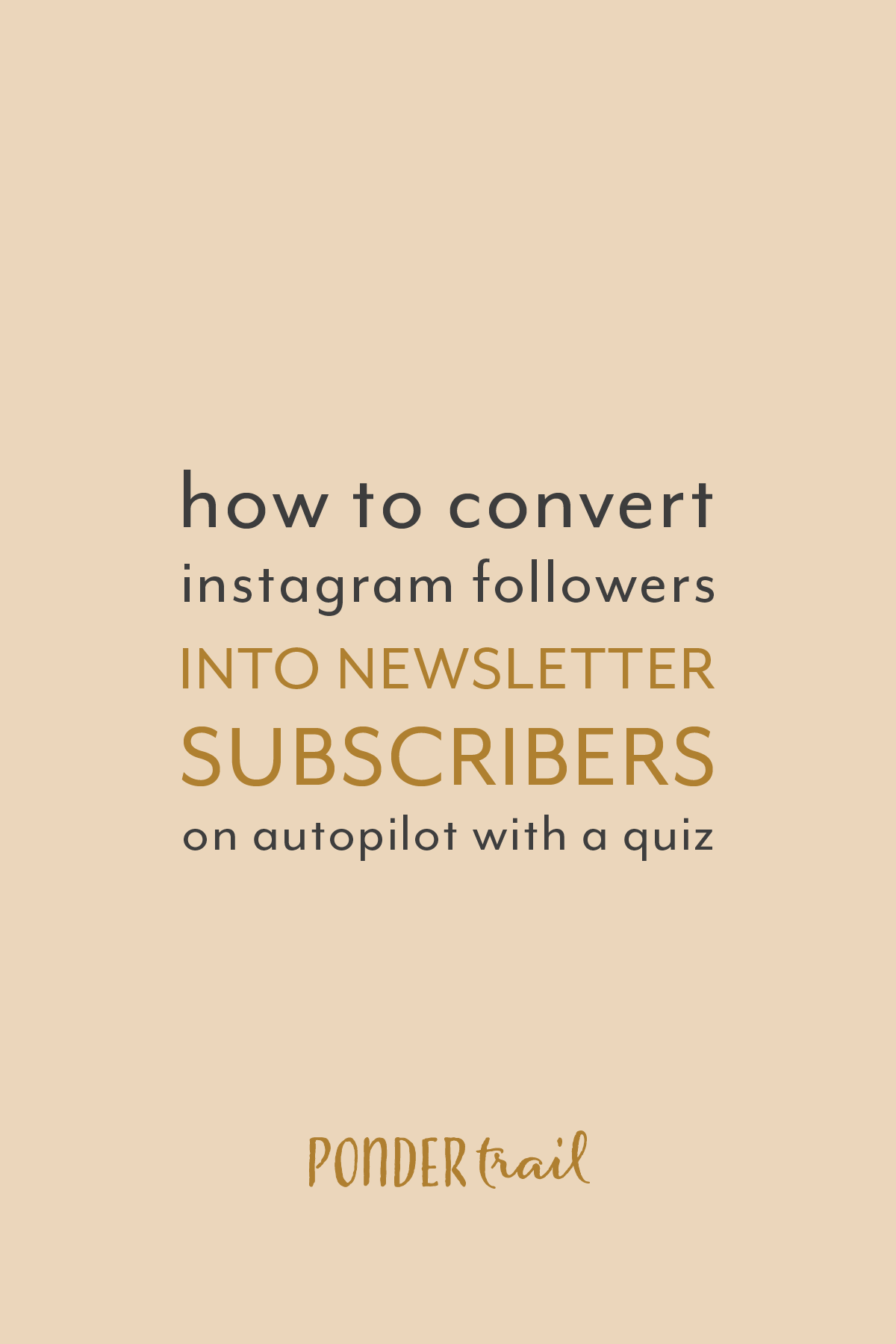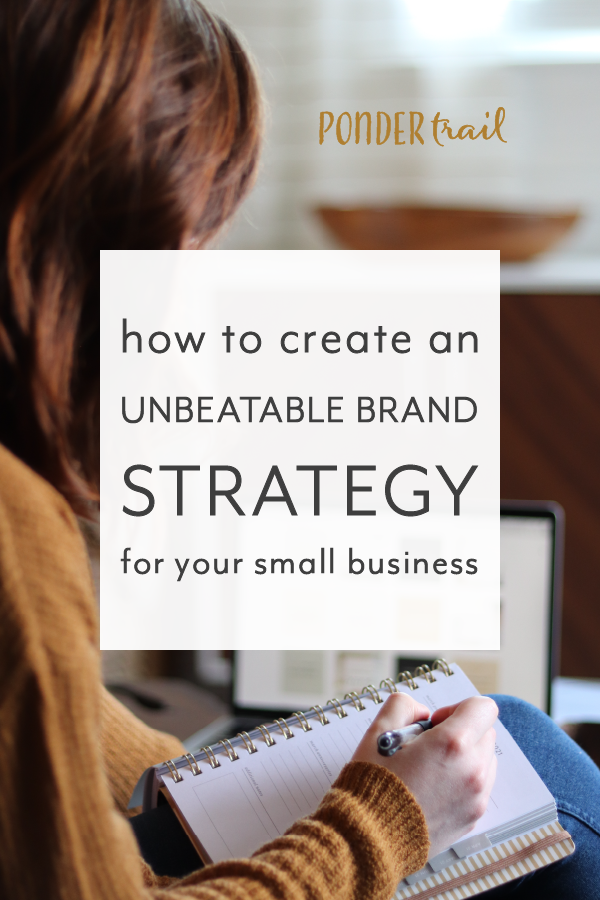How to Transform Your Service (or Course) into an Experience
Blog Pod Audio // Listen to the post
People want to buy an experience—not just a service.
An experience elevates your service to something extra special.
It makes your service more beneficial and enjoyable for clients. It provides more value, which it makes your service worth more. And when clients get more out of your service, it helps you get better reviews and testimonials.
In today’s post, I’m sharing how to turn your service into an experience in 9 simple steps. (This system applies to courses, as well!)
1 // Create a service and an experience your audience wants.
First and foremost, make sure your service suits your audience.
Think about your service or the idea you have for one. Does it make sense for the market your business aims to attract? Is it something your audience needs and will actually pay for?
Then, determine what type of experience your audience would want and enjoy.
What are they looking for in an experience? Are there specific features they’d love? What makes sense for them?
The goal of creating an experience (or a plain Jane service for that matter) is to offer one that is a perfectly fitting and highly desired investment for your ideal client.
Otherwise, you’ll likely put time into creating a service that won’t sell. And wouldn’t you rather be fully booked with a service that’s in high demand?
2 // Get to know the purpose of your service.
Keeping your audience’s desires in mind, what’s the purpose of your service? Think about the problem it solves or the transformation it provides.
Write out why someone would buy your service. How does it benefit them? Identify the main point(s) behind what you do for clients. List all of the objectives and takeaways someone will have after your service is complete.
Anticipate the big reasons, and also the little reasons, of why they would need your service and want to book it.
3 // Visualize the experience, and brainstorm the details.
This is the bulk of transforming your service. It’s where you get creative and formulate what your experience will be like.
Staying true to the purpose of your service and what your audience wants, determine the overall vision of your experience . . .
List adjectives that describe it, and paint the picture. Write a paragraph that portrays what it feels like to take part in your service. Get a strong handle on showing the experience with words. Consider describing the 5 senses of your experience.
Think about the feeling, style, and mood you want to create. (Luxurious? Artsy? Innovative? Quirky? One-of-a-kind?)
What’s the ideal framework of your service? (One-on-one time? Little personal interaction? Short turn around time? Month-long process?)
What would you like in a service like yours? If you were paying for something similar, think about what would make it amazing for you. Think back to your past purchases. What made you ultimately choose to buy? What did you like, and what didn’t you like? What would have made it better? List all the reasons and details you can think of.
This will help you create a basic outline of your vision that covers the details.
4 // Include extras and features in your service.
Now it’s time to think about the ways you can build in aspects of your service that create the overall experience. Be sure to filter every decision through your vision outline you created above.
Experiences often are a compilation of extra items or features. What can you include in your service to make it a well-rounded experience?
Consider what’s included in your service package. Adding high-quality features boosts the value of your service and gives it a few more components to get excited about.
For example, does your service have a workbook? Does it include a video chat or one-on-one time? Do you send a note card or a gift? Think of things to add to your service that make it feel more like an experience.
Note: Don’t “pad” your service with meaningless add-ons though; make sure they are beneficial and bring more value to the package!
5 // Brand your service, and tie it into your business’s brand.
Get creative with ways to incorporate your branding into your service to create a unified extension of the business your audience knows and loves.
For example, use your brand’s voice and style of writing throughout your service, and use visuals that are on-point.
Then, take it a step farther, and brand your service to create something original and fresh. Stay in theme with your business’s brand, and hone in to develop a mini brand that suits the experience you’re creating for your service.
Give it a logo, color scheme, icons, photos, etc. You can keep it simple by using a word-based font for a logo and by choosing colors that expand on the established brand and feeling of your business.
Tie everything together—even in simple ways with branded email headers, signatures, instructions, graphics, etc., for example.
When every entity of your business is cohesive—including your services—it creates an experience throughout your entire business. This is an important component of a well-designed brand, too.
6 // Position your service as an experience.
Guide clients towards thinking about your service as an experience from the moment they hear about it. Be intentional when you describe what your service looks and feels like, and use strategic copy for how you phrase the features and extras.
Walk potential clients through the details and process, step-by-step, to give them a full view of what they will be getting. It’ll help them anticipate a lovely experience rather than “just” a service.
Describing it in this way will also allow clients to imagine exactly what it’s like to work with you and to know if the experience is what they’re looking for and if it’s a good fit.
Note: If you treat your service as an experience, be sure it lives up to the expectation. It’s never a good idea to get someone excited about the experience they’re booking if it doesn’t actually feel like one in the end. This doesn't build trust and is a sure way to set your service (and business) up for failure.
7 // Design an easy and smooth on-boarding experience.
Create a positive experience from the first step of your service: client on-boarding. Make it a pleasant experience, not a tedious, painful chore.
Put thought into the info page (or sales page) about your service, and create a simple and streamlined sign-up.
Aim for a page that highlights what the experience will look like. Make sure it’s straightforward, easy to understand, detailed, and to the point. Anticipate questions and answer them with an FAQ or in your description. Make it easy for them to ask any addition questions. And most importantly, be certain it’s easy for them to book your service and get started.
Avoid creating a “sales-y” feeling around your service by, instead, including details that highlight the benefits and features of it. If your audience can easily determine what your experience is like, a potential client is likely to book if it’s a perfect fit for them—even without you needing to “sell” it to them.
8 // Create a stellar client process.
It goes without saying that the actual service should be a pleasant and well-run experience. The best way to ensure that your service will be a success with each client is to nail down exactly what it will look like from steps A through Z.
Try to create a streamlined system or process to help your service flow the same each time, from start to finish.
A system creates a consistent experience, which gives you a solid handle on your service. And the better you are at your service, the better your client’s experience will be.
Make your service enjoyable and easy to go through or navigate. Use tools and software that add quality to the experience.
Anticipate issues that might arise, and create solutions for them, or build systems into your service to take care of them. What if clients get stuck or have a question? What will communication look like? Will clients have direct access to you? Create a plan for possible obstacles so you can avoid (or lessen) them.
9 // Wrap up your service with off-boarding details.
After a client goes through your service, what’s it like to sign-off? How your service wraps up is the perfect way to tie all the ends together into a fully packaged experience.
Do you follow up with clients? Do you send a thank-you card? Do you stay in touch? Think about meaningful (and realistic) ways you can bring your project to a close.
The end of your service should conclude nicely for clients. Aim to create an off-boarding process that feels like the end of a satisfying last chapter to a book (rather than like a cut-off page or a cliffhanger).
I hope this 9-step system helps you transform your services.
Have you considered turning your service into an experience? What are some ways you’ve elevated your service to give your clients more value? Comment below!












